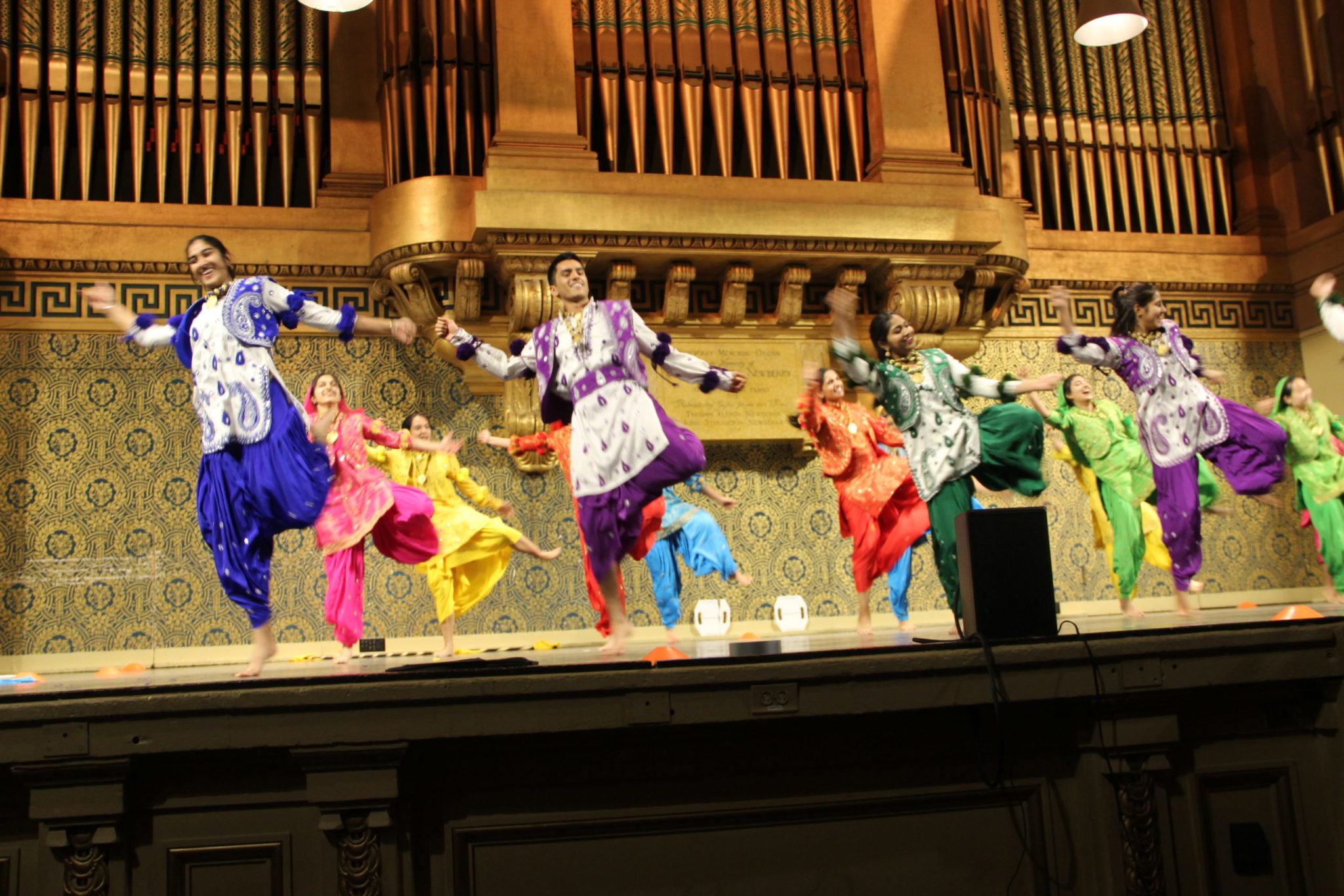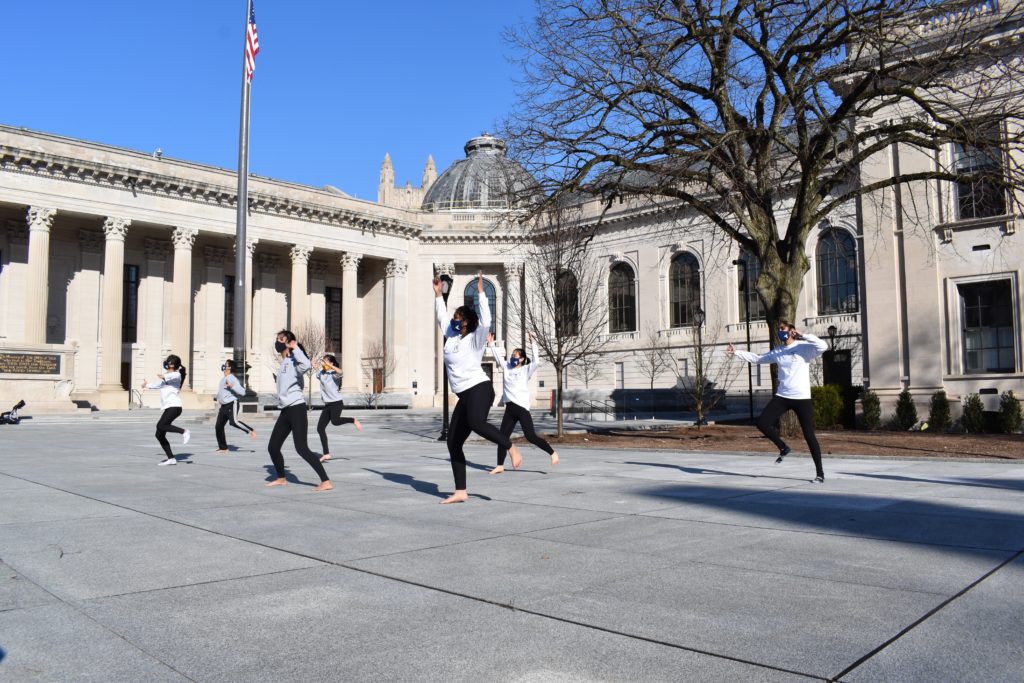
Eric Wang, Senior Photographer
On Feb. 29, 2020, the basement of Woolsey Hall buzzed with the pandemonium of about a dozen dance and acapella groups from across the country preparing for Dhamaal: Yale’s annual South Asian intercollegiate showcase. We, Yale Jashan Bhangra, or YJB unfolded our vardiyaan — vests of crimson, rose, yellow, green and blue — each embossed with a silver blocked letter “Y” on the back. We pulled on our matching kurtas and salwars, remembering to adjust the fabric at our ankles with a safety pin so we wouldn’t trip as we squatted on stage. We tied phumans — decorative cloth pom-poms — around each other’s wrists, and secured flowing chunnis to our heads with bobby pins. Before we knew it, we had stumbled out on stage, marked our places with cones and props and bowed our heads — waiting for the music.
It’s difficult for me to quantify the sheer amount of energy that enveloped us in that space. I think it came from an overwhelming sense of connection to the hall, the audience, and each other. The wooden floor vibrated beneath the balls of our bare feet, charged by the blasting beat of our mix and cheers from the audience. We felt that power rise from the floor up to the back of our arms as we opened them wide and bellowed HOY, projecting to the very back of the hall. We bounced the energy off of one another, pulling our shoulders back and our feet up, squatting, spinning, rotating in formation. We smiled and screamed and winked and willed each other onwards. And I held onto those six exhaustingly exhilarating minutes for as long as I possibly could, relishing the togetherness of it all.

A week later, we scattered across the country for spring break, expecting to dance together again in two weeks’ time. For me, those two weeks at home in Santa Monica, California became the remainder of the spring, the summer and my junior fall away from YJB. For the first few weeks, our interactions were limited to GroupMe messages and the occasional zoom workout. I wondered how long we could sustain the team, and whether our relationships would fade along with the memories of group practices and performances. Above all, I worried that my own love for Bhangra would diminish with distance from the team. I couldn’t have been more wrong.
I found myself running through our set on my living room floor every night of lockdown, anxious to keep the pre-pandemic rhythm alive. Completing the set now felt empowering, possibly because I was able to accomplish something, no matter how small, in a constantly evolving and unstable time. If I could continue to perform our segments out of pure enjoyment, without needing to depend on the rest of my team, it would be incredibly difficult to lose YJB. Taking ownership gave me something to believe in, providing strength, comfort, and hope.

As a senior in high school, I resolved to join a collegiate Bhangra team because I loved dancing with my cousins at Punjabi weddings. I’d never received formal training, but the act of shaking my shoulders and raising my arms brought me closer to my family. When I first joined the team my freshman year, I remember learning my favorite Bhangra step: fasla, or crop in Punjabi. I listened as an oldie described the graceful, swaying move. She said, “Become the wheat swaying in the breeze.” My ancestors celebrated wheat and depended on it for their survival. With YJB, I began to dance for craft and meaning, reflecting on the wheat — and the steps — with new intention.
And perhaps most of all, I found myself treasuring the simple YJB moments: the spontaneous nakhra during practice, breaking into Bhangra squats with a YJB friend at Woad’s, laughing at the water fountain in PWG… so much so that in my fall semester, I looked forward more than ever to our weekly zoom practices, where — thanks to our brilliant captains — we kept our family alive, welcomed a generation of new members and began learning a new set for the new year.
Spring has sprung and many of us are back on campus. Once a week, we gather for Bhangra practices on the Beinecke plaza. Now, I dance with pride and hope. I dance to celebrate and share an art form that emerged from my ancestors. I dance not only for an audience, but for myself and for YJB.
For now, I’m simply grateful to be able to dance with my friends once again.
But when we can, we’ll be back in Woolsey, sharing Bhangra with new vibrance.







